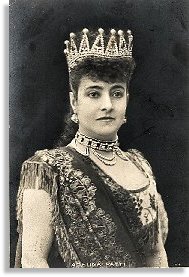 |
|
 |
The
next meeting is at Irene's house on Wednesday January 16th 2013
at 7.30pm.
The topic is 'William Marshall'.
The topic is 'William Marshall'.
We meet every six weeks or so, usually on a Wednesday evening, at one of our members' houses.
At our meetings one of our number gives a talk on a historical subject of particular interest to him/her for about forty minutes, then we have a discussion about what we have heard.
We currently have fourteen members but new recruits are always welcome. It is not compulsory to give talks so don’t be put off coming by thinking that you will have to perform.
At each meeting we decide on a speaker, subject and venue for the following meeting.
The choice of topic is often not known until the meeting actually takes place, as a group member will volunteer and then decide what the subject matter will be.
Previous meetings - 2011/12:
November Ford Madox Brown's painting Work
January Major General Scovell
February The Theft of the Mona Lisa
March The Protocols of the Elders of Zion
May John Ruskin
June The Diva and the Deadly Disease
August William Cobbett
September Release of the Slaves
October Lawrence of Arabia
November The Battle of Cable Street
Report on January Meeting
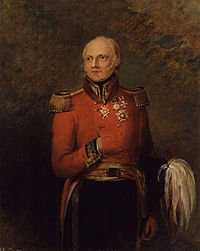 The subject of the January meeting was General
George Scovell.
The subject of the January meeting was General
George Scovell. Scovell was born in London in 1774, to a family of quite modest means.
His first occupation was as an engraver, but in 1794 he joined the army.
As his army career progressed he became the Duke of Wellington's chief code breaker, for which he was renowned.
Schovell decoded the Great Paris Cipher, which was the equivalent at that time of the Enigma Code in WWII.
To make the meeting even more interesting members of the group were given some codes to decipher.
Read about Wellington's lucky break!
Report on February Meeting
Terry Browne presented a very interesting and informative topic entitled The Theft of the Mona Lisa. The painting was stolen from the Louvre in August 1911 by Vincenzo Peruggia, an Italian immigrant who had previously been employed at the Louvre. He kept it hidden for two years, first in Paris and then in Italy. Eventually Peruggia took it to an art dealer who reported it to the police. He was tried in Italy and defended himself on the grounds that he had wanted to repatriate the painting as it really belonged in Italy. He was given a short custodial sentence of approximately seven months and the painting was returned to the Louvre in 1913.
Report on March Meeting
This very interesting topic was presented by Liam Canavan and provoked a great deal of group discussion.
The Protocols of the Elders of Zion
The Protocols of the Elders of Zion purports to document the
minutes of
a late 19th century meeting of the Jewish leaders, discussing their
goal to global hegemony. This document was translated
into multiple languages and disseminated internationally.
Despite having been exposed as fraudulent years before, it was studied
in German schools after the Nazi Party came to power in 1933 and was
Hitler’s justification for initiating the holocaust.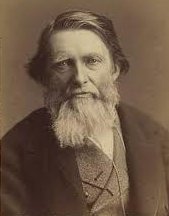
Report on May Meeting
The History Group meeting on the 2nd May was given a very interesting presentation by Michael Sparrow on John Ruskin, an unusual and very influential person of the Victorian era. His interests ranged through all the arts, to architecture, education and social theories. Ruskin was a prolific non-fiction writer, including his multi-volume work entitled 'Modern Artists'. He was a great advocate of Victorian Gothic in preference to classical architecture. His ideas had international approval and drew praise from such renowned figures as Tolstoy, Proust and Ghandi.
Report on June Meeting
The diva in the presentation is the opera singer Adelina Patti (1843-1919), born in Madrid of Italian parents. Patti played her first leading role at the age of sixteen and went on to have a very successful international singing career and a somewhat scandalous private live. However, in 1878 Patti bought a castle, Craig-y-Nos, in Breconshire as a haven from her busy professional life, employing many local people and became something of a philanthropist in the local community.
The connection between Patti and the deadly disease (tuberculosis) came after her death when the castle was sold to a Welsh Association for the treatment of TB. In 1948 the newly formed NHS took over the management of Craig-y-Nos, but by the 1960's it had become a convalescent home for patients with chest diseases, rather than TB, due to the decline of this disease, eventually closing in the 1980s: it is now a hotel and conference centre.
Report on August Meeting
William Cobbett, by Michael Sparrow.
William Cobbett (1763-1835) was described as 'a very powerful political writer
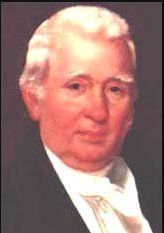 of his time'. His main concern was the plight of the common man
and to ensure that injustices were put into the public domain, he
published the Political Register in 1800 and continued to do so until
his death in 1835. He had a very interesting and humorous style
of writing that appealed to all, even if they did not agree with his
sentiments. Cobbett had several criminal libel actions brought
against him, necessitating him to move to France, America and back to
England to escape the consequences, although between 1810-1812 he did
spend two years in Newgate prison. He also published a series
entitled Rural Rides drawing attention to the working conditions of the
farming communities. Cobbett's political writings were very
influential and encouraged others to improve the lot of the working man.
of his time'. His main concern was the plight of the common man
and to ensure that injustices were put into the public domain, he
published the Political Register in 1800 and continued to do so until
his death in 1835. He had a very interesting and humorous style
of writing that appealed to all, even if they did not agree with his
sentiments. Cobbett had several criminal libel actions brought
against him, necessitating him to move to France, America and back to
England to escape the consequences, although between 1810-1812 he did
spend two years in Newgate prison. He also published a series
entitled Rural Rides drawing attention to the working conditions of the
farming communities. Cobbett's political writings were very
influential and encouraged others to improve the lot of the working man.Report on September Meeting
Liam Canavan presented a paper entitled 'The release of the slaves'. The slaves were all those who had to toil on the farms and later in the 'dark satanic mills'. Liam outlined the progress of power from human muscle power to animal to water to wind to fossil fuel. As mechanisation became more efficient, and relatively, more cost effective then the need for slaves decreased. It was capitalisation that exterminated slavery. Manchester became the world's first industrialised city but also had the first industrialised slum---Angel Meadows. A look at history reveals that people preferred to live and work in the city rather than on the land. The latest example of this is China. Recently, an interveiw with a Chinese couple, who a generation ago would have been living in rural poverty were now watching, in their city house, their 52 inch TV and owning a fancy car. They were living the 'American Dream'.
Report on October Meeting
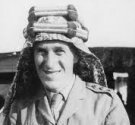
T.E Lawrence is a very well known figure in our more recent history, but he is known mostly for his fame as Lawrence of Arabia. The presentation, whilst covering his exploits in Arabia, also tried to explain what a complex character he was and what his other achievements were after the First World War.
Report on November Meeting
The Battle of Cable Street took place on Sunday 4th October 1936 in Cable Street in the East End of London. It was a clash between the Metropolitan Police, overseeing a march by the British Union of Fascists led by Oswald Mosley; and anti-fascists, including local Jewish, socialist, anarchist, Irish and communist groups. An estimated 100,000 anti-fascist demonstrators turned out and were met by 6,000 police, who attempted to clear the road to permit the march of 2-3,000 fascists to proceed. After a series of running battles, Mosley agreed to abandon the march to prevent bloodshed. The BUF marchers were dispersed towards Hyde Park instead while the anti-fascists rioted with police. The Battle of Cable Street was a major factor leading to the passage of the Public Order Act 1936, which required police consent for political marches and forbade the wearing of political uniforms in public. This is widely considered to be a significant factor in the BUF's political decline prior to the Second World War.
Pam Curley
